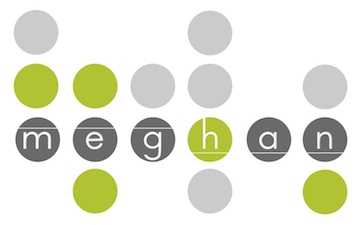Illuminate
This week in our classes, we have learned how important "illumination" is in design. Sometimes there are certain aspects of a space you want to bring attention to. "A strongly focused pool of light against a background of general darkness is a highly effective device for focusing attention" (Roth pg. 86). The more literal definition of the word uses light, but it doesn't necessarily have to.
In Perception and Communication, we learned a new drawing technique using vignettes. This kind of drawing really brings attention to everyday objects and otherwise mundane scenes. Here is an example from my sketchbook:
 These are just normal scenes you would find on a desk in studio, but drawn like this makes them seem more special. Watercolor is especially useful when trying to illuminate something.
These are just normal scenes you would find on a desk in studio, but drawn like this makes them seem more special. Watercolor is especially useful when trying to illuminate something.Idiom
Typically, idiom refers to a phrase or saying that has a double meaning. Here is a drawing I did of a well known idiom:

This concept can be applied to when we were working on our artifact for studio. We had to figure out how to translate the morals we learned from our fairy tales into an object. It couldn't be something that was literally taken from the story. The essence of our fairytale had to show through in our object. "The mind does not interpret incoming data as signifying nothing" (Roth pg.67). This quote points out that everything you include in a design is going to be seen and you need to make sure it sends the correct message. As with idioms, you need to pull out the true meanings of an object or phrase besides the obvious clues.
Material
Choice of material is extremely important. In History and Theory we learned about some of the first civilizations and their buildings. In Teotihuacan, Mexico the Mayans built their temples out of stone. This provides a large contrast to the green environment surrounding it. Whereas in Mesopotamia, the Ziggurat is similarly colored to the desert around it.
 Early in civilizations, the materials used were the only choice that society had. An example of this is in the Sumer region. The most readily material to build with was clay. People had to develop techniques to build successful dwellings. The need to be resourceful and innovative in design was used thousands of years ago and still is important today.
Early in civilizations, the materials used were the only choice that society had. An example of this is in the Sumer region. The most readily material to build with was clay. People had to develop techniques to build successful dwellings. The need to be resourceful and innovative in design was used thousands of years ago and still is important today.Commodity, Firmness and Delight
Commodity, Firmness and Delight are the three parts of the definition of architecture according to Vitruvius. The need for commodity requires that the design works for that building's function. An example of this could be a hotel. For a hotel to be a successful design it needs to be hospitable and helpful to it's guests.
In my psychology of dress class, we learned about the function of dress. Dress isn't necessarily about the need for clothing. Its role is to communicate our identity. An example from class is Barack and Michelle Obama's outfits for the inaugural balls. Their dress needed to communicate their roles in our society as the first family:
 I think they successfully did this but with a modern twist. Their clothing choices give off a classic look but also very distinguished. They are our American royalty and this comes through in the richness of the fabric and colors.
I think they successfully did this but with a modern twist. Their clothing choices give off a classic look but also very distinguished. They are our American royalty and this comes through in the richness of the fabric and colors.source
Firmness calls into question the structure of the design. Does the building hold up over time? This was important when designing our chairs for Pat in drafting. I had to make sure that there was support for the pieces that were lying horizontal. To do this I put a vertical piece at a 90 degree angle. You can see that underneath the desktop surfaces in this picture:
 The last important aspect of design is delight. Sometimes the appeal to the visual senses is given more importance than the functionality of the design. Mid-century architects responded to this by asserting that "delight in architecture had no independent existence, that beauty resulted automatically through maximizing functionality and the expression of structure" (Roth Pg. 67). However, these days designers believe it is important to strive for the most visually pleasing design as well as durability and functionality.
The last important aspect of design is delight. Sometimes the appeal to the visual senses is given more importance than the functionality of the design. Mid-century architects responded to this by asserting that "delight in architecture had no independent existence, that beauty resulted automatically through maximizing functionality and the expression of structure" (Roth Pg. 67). However, these days designers believe it is important to strive for the most visually pleasing design as well as durability and functionality.


No comments:
Post a Comment